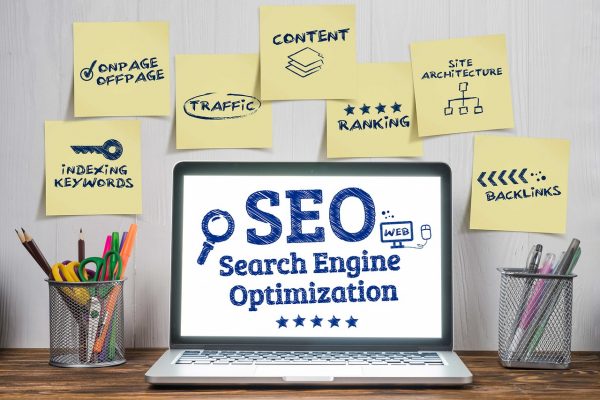

The Best PMAX Campaign Structure for E-Commerce Success
The Best PMAX Campaign Structure for E-Commerce Success
Crafting a successful e-commerce presence takes more than listing products and hoping for clicks. When it comes to Google’s Performance Max (PMAX) campaigns, success isn’t built on automation alone; it’s defined by strategic structure, relentless feed optimization, and a keen understanding of Google’s AI-driven pathways.
If you’re running an e-commerce store and eyeing better ROAS, higher conversion rates, and smarter budget use, the campaign blueprint you choose will determine your course. Let’s break down the essential ingredients for an optimal PMAX setup. Built on field-tested strategies and the latest best practices from the trenches of digital marketing.
Smart Campaign Segmentation: Why It Matters
One of the most debated topics among PPC specialists is how to segment PMAX campaigns for e-commerce. There’s wisdom in simplicity, yet there’s also undeniable power in granularity. If implemented thoughtfully.
Breaking your PMAX campaigns into segments by product category or profit margin allows you to serve more relevant ads, follow your business’s unique priorities, and maintain clear performance visibility. For stores with diverse product ranges, grouping campaigns by category. Say, shoes, apparel, and accessories. Makes sense. Each group can then receive tailored creative assets, landing pages, and messaging.
For businesses where some products carry significantly higher profit margins, segmenting by margin can help steer your budget toward the most profitable lines. This allows stronger bids and asset investment where they matter most. Feeding the algorithm insights that drive scalable revenue growth.
Many successful advertisers caution against over-segmentation though. Each campaign requires enough conversion volume to exit the learning phase and optimize efficiently. For most small-to-medium shops, two to five campaigns will be the sweet spot. Balancing control and data density without starving campaigns of actionable signals.
Mastering Feed Optimization: Titles, Images, and Product Data
The fuel for your PMAX engine? Your product feed. This often overlooked area is where most e-commerce brands leave money on the table. And it’s the easiest starting point for better results.
Titles should lead with the most critical information: brand, product type, and defining features. A title for a running shoe, for example, is far more effective when it reads “Nike Air Zoom Pegasus 40 Running Shoes – Men’s Size 10, Blue” instead of just “Pegasus 40 Shoes.” This approach improves your ad’s relevance and match quality for high-intent shoppers.
Images are the first thing that grabs attention. High-resolution, clutter-free photos on white backgrounds, showcasing the product from multiple angles, consistently outperform stock, lifestyle images for primary listings. Maintain up-to-date visuals for new models or seasonal lines, as product freshness signals quality to both shoppers and the Google algorithm.
Attributes such as size, color, material, and gender are not just nice-to-haves; they’re necessary for granular relevance. Long-tail queries thrive on these details. The more complete your product data, the better Google can match your listings to buyers’ true search intent. Remember: product data feeds aren’t “set and forget”. They require ongoing maintenance.
Steering Google AI with High-Value Audience Signals
Ever feel like Google’s AI sometimes needs a bit of direction? Audience signals are your steering wheel for Performance Max. While Google will eventually optimize on its own, leveraging strong first-party data, in-market segments, and custom audiences can sharply accelerate the learning phase. And direct your campaigns to prioritize your most valuable segments.
Add audience signals based on:
– Past purchasers and high-value customer lists
– Visitors who engage deeply with your site (such as those who add to cart or view multiple product pages)
– High-intent in-market segments aligned with your top product categories
Creating separate asset groups for these signals allows the algorithm to test assets with specifically defined shopper types. Precise signals mean more relevant ad placements, faster learning, and, ultimately, higher conversion rates from the shoppers who already matter most to your business.
Navigating Cannibalization: Keeping Your Campaigns Cohesive
One challenge savvy e-commerce marketers face is channel overlap. Especially as PMAX campaigns spark concern about cannibalizing traffic from Search and Shopping. When multiple campaigns compete for the same queries, missteps cost both efficiency and profit.
To sidestep self-competition:
– Use exact match keywords in Search campaigns to retain control over high-value branded and generic searches. Google’s algorithm gives these precise matches priority over PMAX.
– Regularly analyze search term reports for traffic overlap and performance dips. If you notice PMAX taking credit for branded traffic, consider segmenting your product lines or reducing brand term bidding in PMAX.
– Use negative keywords carefully. While PMAX doesn’t allow campaign-level negatives through the main interface, you can add account-level negatives or leverage brand exclusions to refine targeting.
It’s all about smart boundaries. The most agile brands revisit campaign interactions monthly, ensuring each campaign has space to thrive without stepping on others’ toes.
Performance Tracking: Custom Conversions and Asset Insights
PMAX throws a lot of automation at you, but ownership over your performance doesn’t stop there. True optimization comes from tracking what matters most. Then adapting based on real asset and audience group outcomes.
Set Up Custom Conversions
Instead of relying only on basic sale data, track metrics that echo your actual business priorities. Maybe it’s repeat purchases, high-margin items, or subscription signups. Implement custom conversion events through Google Tag Manager or the conversion section within Google Ads to measure results that really move the needle.
Asset Group Breakdown
Not all creative is created equal. Google’s asset group reporting lets you see what headlines, images, videos, and audience combinations are driving conversions and ROAS. Make it routine to review this breakdown. Pause underperforming assets or asset groups and test new angles and value propositions. Incremental improvements here frequently add up to the biggest swings in profitability over time.
Rigorous review and adaptation. These are what separate e-commerce leaders from the pack.
Final Thoughts: Building a Future-Proof PMAX Strategy
Every e-commerce journey is unique, but the foundation of a brilliant PMAX campaign is always the same: intentional segmentation, relentless feed optimization, and precise use of audience and asset data. This isn’t just about following the latest trend; it’s about owning the strategy and execution that makes automation truly work for you.
Ask yourself: Is your PMAX structure reflecting your real business priorities? Are your product feeds sending the right signals every single day? The brands that keep these questions front of mind will find themselves continually edging ahead of the competition.
Ready to see what a finely tuned PMAX approach can do for your e-commerce store? Dive in, test bravely, and put these techniques to work. Your bottom line will thank you.
Frequently Asked Questions
How many PMAX campaigns should an e-commerce store run?
Most stores will achieve the best balance of data and control with two to five PMAX campaigns, segmented by distinct product categories or profit margins. Too many campaigns can dilute conversion data, while too few may lack nuance.
What are the best ways to optimize my product feed for PMAX?
Prioritize clean, descriptive titles; high-resolution images; and detailed product attributes such as color, size, and material. Regularly audit your feed to ensure accuracy and completeness. These tweaks can significantly impact visibility and conversion rates.
Can I use audience signals with first-party data in PMAX?
Absolutely. Importing first-party lists (like past purchasers or high-LTV segments) helps Google’s AI find more shoppers like your best customers, expediting the learning phase and boosting conversion quality.
How can I stop PMAX from cannibalizing my Search or Shopping campaigns?
Use exact match keywords in your Search campaigns and analyze overlaps with PMAX regularly. Consider brand exclusions or segmenting product lines to keep campaigns working in harmony.
What metrics should I use for performance tracking in PMAX?
Go beyond basic purchase tracking by setting up custom conversion events aligned to your business’s priorities. Use asset group reports to spot which creative and audience combinations are really driving results.







